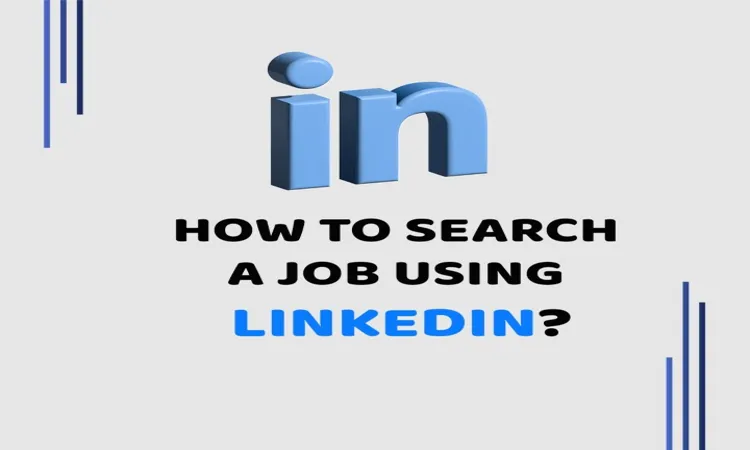Let's face the bitter truth, Hiring is tough! Recruiting new employees is a time-consuming and labor-intensive procedure.
Furthermore, you just have to get it exactly right, otherwise, you might get stuck with an employee whom you'd have to fire eventually.
Many common hiring mistakes are even committed by professional recruiters during the hiring process. So with the help of this article, we want to ensure, that you don't do the same.
Though there is no predefined set of rules to hire the best candidates.
Sometimes the error of judgment can also make things messy. However, knowing some common hiring mistakes would help you avoid them in the future and make the process of recruitment easy and smooth.
To avoid hiring mistakes and attract the right candidates, you can post free job listings on Jobaaj and ensure you’re reaching a pool of qualified professionals.
Before we jump into any of that, let me emphasize my point on why you need to avoid any Hiring mistakes on your part.
For example, do you know...?
- On average, 250 resumes are sent for each corporate job opening.
- Employee referrals are cited by 48% of organizations as a source of high-quality hires.
- Only 12% of employees strongly feel that their company does an excellent job onboarding new employees.
- Job postings that included a wage range received 75% more clicks than those that did not.
- It can cost a company 1.5 to 2 times an employee's annual salary to lose an excellent employee.
Here are the 10 most common hiring mistakes HRs make
If you are an HR then, unfortunately, you might be able to relate to these common hiring mistakes :
1. Having an inaccurate job description
In your job posting, describe the job profile accurately. If you don't, you'll be less likely to attract individuals who possess the attributes and competencies you seek.
A good job description is more than just a list of responsibilities; it should explain the role's general purpose and identify crucial responsibilities.
Job descriptions can aid in identifying specific talents or abilities required for a position, as well as the pressures that the role faces.
A decent job description informs the applicant about the duties and responsibilities of the position. Also, don't "oversell" the position by leading applicants to assume it has more opportunities than it does.
Don't, for example, indicate that a speedy promotion is a possibility if it isn't. If you do, your eager new hire may become dissatisfied and depart.
Always remember, that the hiring process will cost the company more than retaining the same employee with an increment.
2. Not stressing about internal hiring
Sometimes the best candidates are right in front of your eyes!
Internally filling vacancies can save money and time by avoiding the costs and effort involved with advertising for external applicants.
Additionally, an existing employee will be familiar with your company's operations, principles, and mission. They'd probably be able to "get up to speed" in a new capacity faster than an outsider.
Another advantage of promoting and training your employees is that it might improve their morale and productivity.
Recruiting from within can also help to preserve critical information that would otherwise be lost if someone left your team or business. Not delving into internal hiring is a costly mistake that most HRs make.
There are some particular advantages to the internal hiring process:
- You're already familiar with internal candidates.
- Recruiting in-house saves money in the long run.
- Internal candidates are already familiar with the organization.
- It's Easier to Find Internal Candidates.
- Increased in-house recruitment increases employee engagement and loyalty.
3. A lack of a well-defined hiring process
Hiring is not a process of adding more people to the company; it is about adding more profit to the company (figuratively).
Isn't it true? It is about foresight and planning for the next 5 to 10 years, and as you undertake this planning, your new employees should be a part of this plan.
The hiring process should be well-structured and well-defined. Every minute detail should be taken into consideration. This suggests that managers need to understand the company's goals and their plans for reaching them with their employees.
Not having an easily manageable and structured SOP is perhaps the most common hiring mistake HRs make.
A well-structured recruitment procedure is required to recruit effectively. However, under the need to fill positions as soon as possible, many recruiters stress speed above quality, which may lead to the omission of critical elements in the recruiting process.
While it is usually necessary to fill a position quickly, companies must strive to strike a balance between quality and speed in the recruiting process.
Recruiters might resist the push from recruiting managers to fill the vacancy faster by outlining how the speed-quality exchange would influence the company's performance.
4. Recruiting in isolation
Traditionally, HR and recruitment departments have worked in isolation. They receive information about a job opening from a department.
Then they set about finding, qualifying, and hiring the best candidate for the job. It's a fact that hiring can be a hefty burden to bear.
Furthermore, there are numerous elements that you may overlook. It's impossible to hear everything the candidate says during a resume review, phone interview, or in-person interview. Make hiring new employees a cooperative effort.
Increase your team's involvement in the hiring process. To find the ideal candidate, use their skills, industry knowledge, and team knowledge.
5. Being biased
This is not just unprofessional but oftentimes also results in the hiring of an unsuitable candidate who may be of no use to the company.
We get it! You are only human, and it's human nature to be biased. And sometimes, it's even subconscious. A large behavior of this kind of bias in the hiring process is observed against women.
Many countries(including India) prohibit identity-based discrimination in the workplace, illegal by punishment extending for 5 years and more!
For this and countless other ethical reasons, try to not favor particular candidates that share your caste, religion, sect, ethnicity, ideology, age, gender, etc.
Moreover, it circumscribes the talent pool and gives you a limited choice, which may lead to a poor hiring decision.
6. Giving all job promotion outlets the same amount of attention
You may be compelled to adequately cover all your possibilities in your haste to get your work out on the market.
Posting your job opening on every site you can think of, whether it's social, premium, or specialty, can make you feel like you've done your best and reached the most people possible. But you NEED a way to analyze the data coming.
You can do so by using ATS technology to screen all the job posting outlets and convey to you the success rate and compatibility of each of them.
Alternatively, you can outsource your hiring solutions to a recruitment agency that can handle job posting, talent sourcing, and interview processes all by themselves.
7. Expecting Too Much of a New Hire Too Soon
In most cases, it takes roughly three months for a new hire to fully integrate into the team and start providing results.
When a post has been vacant for some time or the hiring process has been long, it may make sense to want them to "hit the ground running," but this can mean that they don't get enough time to learn properly.
As they learn about the organization's and team's goals, you or your team must assist the recruit in familiarizing themselves with those goals. On their first day, make them feel welcome and introduce them to the staff.
Allow them to ask questions seek assistance, and schedule regular check-ins to evaluate how they're progressing.
8. A candidate's feedback is important
Recruiters frequently avoid soliciting comments from candidates, particularly those who have been rejected.
Why? They assume that any comments they receive will be negative or ineffective while this is not the case.
While you may be tempted to solely collect feedback from successful hires, you should also collect feedback from those who were rejected.
The candidate's feedback has its important for making the future hiring process smooth.
Well, it is often ignored and the sound solution is given below. A candidate feedback survey form should be included in your recruitment process.
Many apps and tools, such as Starred or Hyphen, can assist you in gathering responses. They can even compile a report based on the responses.
Furthermore, these technologies work in tandem with the rest of your recruiting tech stack.
9. Rejecting an Overqualified Candidate
It's easy to dismiss an overqualified candidate, either for the same reason as Mistake 5 above or because you're concerned they'll get bored and depart for a more interesting challenge elsewhere.
However, even if they don't stay long, highly experienced and brilliant people may have the skills and expertise to assist you in building your team.
Consider what prospects for advancement, or incentive you might be able to offer this excellent person to motivate them to stay loyal to your firm.
This is a common hiring mistake that often occurs and should be dealt with with patience and critical thinking.
10. Ineffective interview question
Yes! Ineffective interview questions are solely the result of an unwillingness to research. Asking the right questions to your candidate is the only way you can determine if they can fulfill the requirements that your company is looking for.
Similarly, if the questions are not well chosen then the recruiter tends to ask those old-age questions that are frequently asked.
Like, Tell me about yourself. Where do you see yourself in 5 years? What makes you different from the rest, or why should I hire you?
These are questions whose perfect answers have been thoroughly researched and posted on the internet for everyone to see. Thus these questions are not relevant at all.
Ask profile and experience-centered questions. Ask them about the ROI they were able to generate in their previous campaigns, ask them about their past sales record, and ask them about their plans and whether they will be willing to commit for the long term.
Concluding Note
Making mistakes is easy, but if you put out a little effort, you may easily prevent them. You can streamline the entire process and make it go smoothly by utilizing technology.
As previously stated, some companies speed through the hiring process to fill a position, while others take too long, resulting in the loss of qualified individuals.
If you don't have to lose them, make sure to follow up with both the interviewees and the interviewers, and keep everyone updated on the status. Interview scheduling, for example, can be automated to save time and effort.
It is also cost-effective to automate your recruitment procedure.
Alternatively, you can always just outsource the entire catastrophic process to experts, i.e., a recruitment agency that can deliver better HR solutions in less time.
Thanks for Reading!
Get enrolled in our free workshops








